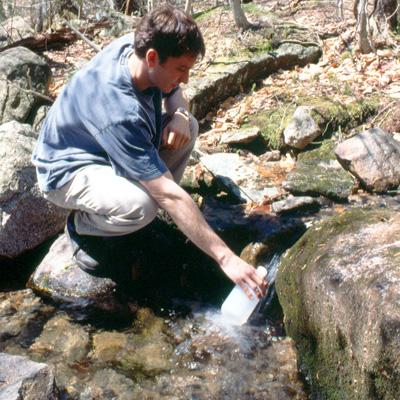Biogeochemical Modeling of Soil and Surface Water Responses to Climate Change in the Northeastern U.S.

Effects of climate change will show up differently across landscapes that vary in biogeographic features. To evaluate the impacts of climate change, scientists must untangle multiple climatic factors and other human-caused stressors likely to simultaneously affect ecosystems over the coming decades. Forest ecosystem computer models are useful tools to understand and predict the interactive effects of climate change, atmospheric carbon dioxide, and atmospheric chemical deposition on the water quality and characteristics of forested watersheds.
NSRC researchers used computer models to assess the effects of potential future changes in climate and atmospheric carbon dioxide on concentrations and movement of major chemical elements at three watersheds in the Northern Forest. They studied Hubbard Brook Experimental Forest in New Hampshire, Huntington Wildlife Forest in New York, and Sleepers River Watershed in Vermont.
Model results show that under warmer and wetter future conditions, transformation of soil nitrogen through mineralization and nitrification markedly increases, resulting in increased concentrations of nitrate in stream water at all sites and under all scenarios. High concentrations of nitrate in streams, ponds, and lakes can result in poor water quality and algal blooms. However, the timing, patterns, and magnitude of nitrate increases vary depending on the climate scenarios evaluated and characteristics of individual sites. These analyses highlight the critical role of climate change in determining potential changes that might be expected in Northern Forest ecosystems over the next 100 years.
